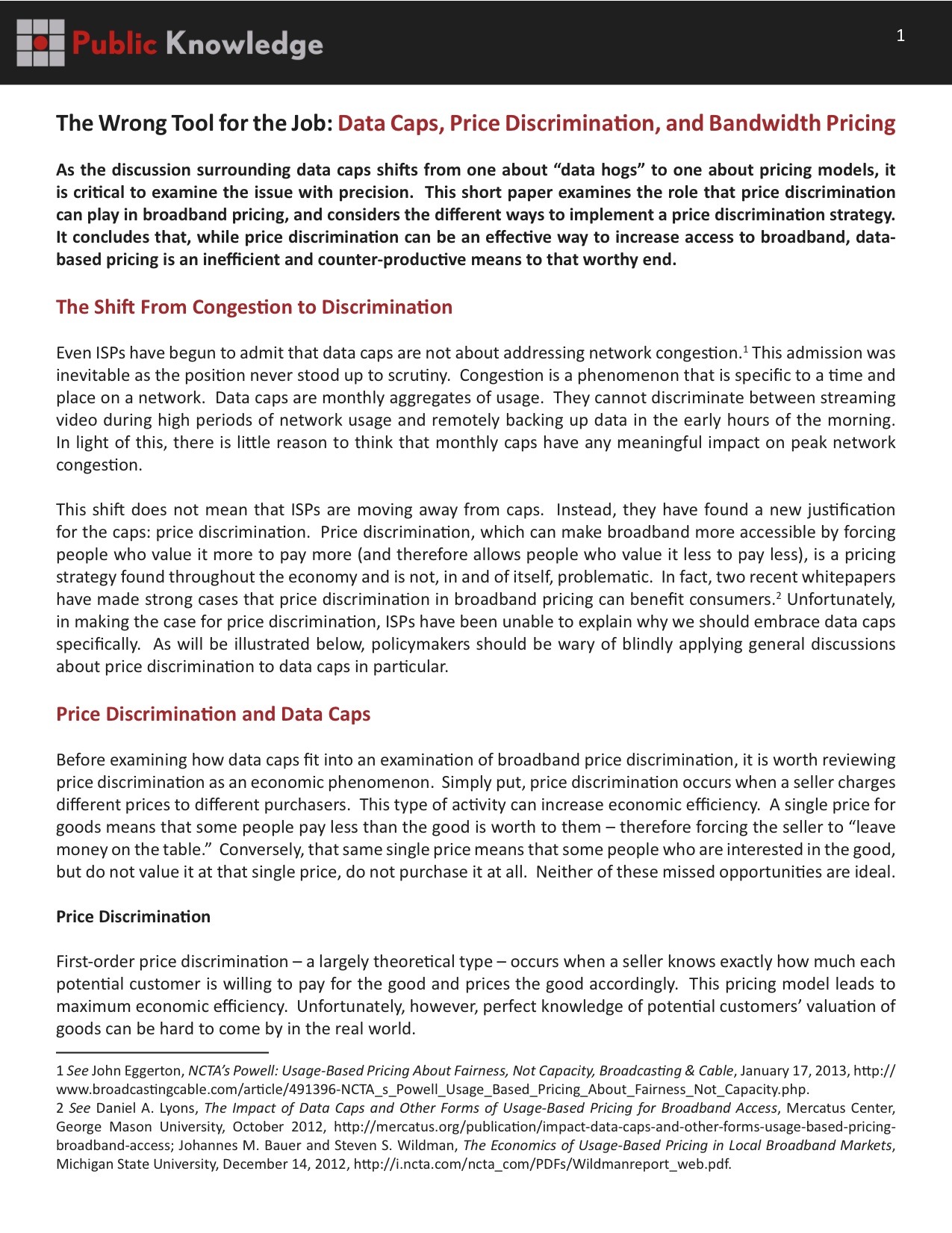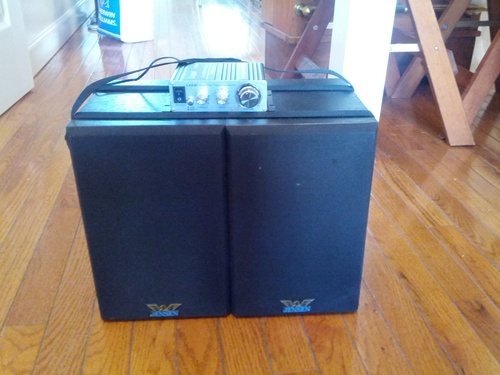
What you will need:
1. Some sort of music source (phone, laptop, basically anything with a headphone out)
2. Speakers
3. Speaker wire
4. An amp (I used this one, which cost $25)
5. A patch cable to connect your source to the amp (I used this one, which cost $2).
6. 4 screws plus 8 non-metal washers (optional)
7. Some straps (I used these, which cost $8) (optional).
The challenge here was to get music into the backyard. In the old house we just ran some speaker wire from the receiver into the back but, for various reasons, that is no longer an option. While I would love to be able to wirelessly sync all of the speakers in the house to a central source
1) I’m not going to buy a Sonos system with all of its proprietary stuff, and
2) I’m not in the Apple ecosystem so those expensive solutions don’t work, and
3) I don’t have my act together enough to hack a system together myself.
I was thinking about just buying a boombox for the backyard, but they are kind of expensive and the speakers aren’t that good at my price point. Fortunately, my phone makes a pretty good source for music. It can tap into the music server that is running at home (mt-daap) with this app, can stream from google music, and generally can do what I need it to do. I also have a bunch of speakers lying around the house. But how can I bring these together?
The easy answer is an amp. The amp just takes a signal from your source (like your phone), AMPlifies it to make it louder, and sends it to the speakers. It’s kind of like the core of a boombox.
Setting it up is also easy. All you need to do is connect your phone to a cable that has headphone plugs (1/8") on both end:
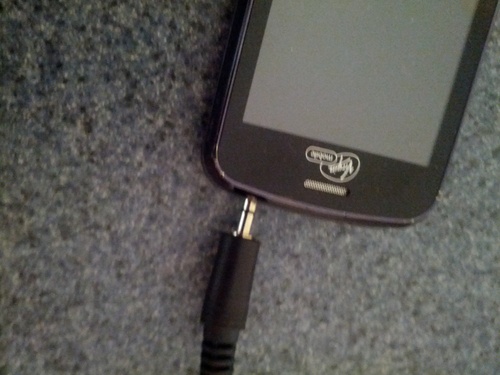
The other end goes into the amp:
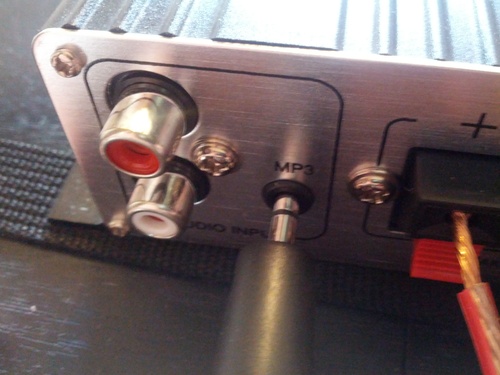
Then you connect the amp to the speakers (the colors on the terminals matter - make sure to match them):
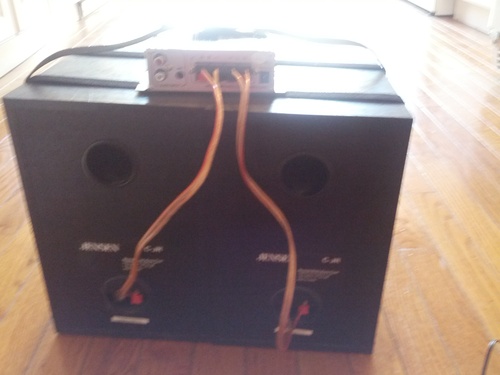
Power up the amp:
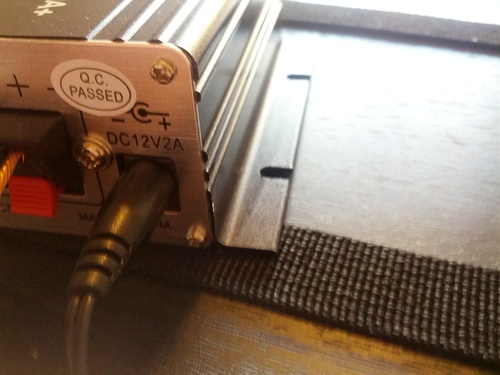
and you are ready to go.
Truth be told, you can leave it there. However, with a very little extra bit of work you can bring them into a nice package.
Wrapping the straps around the speakers brings them together (and if you get a good length, you can also use them to create a handle):
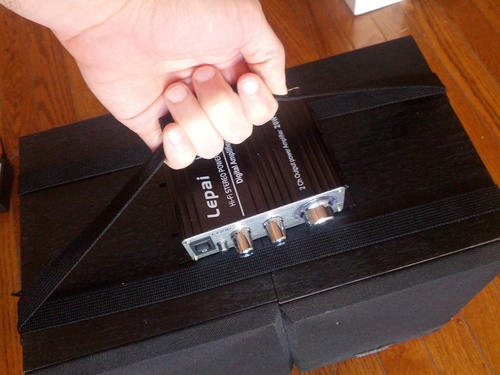
And screwing the amp into the speakers keeps it in place:
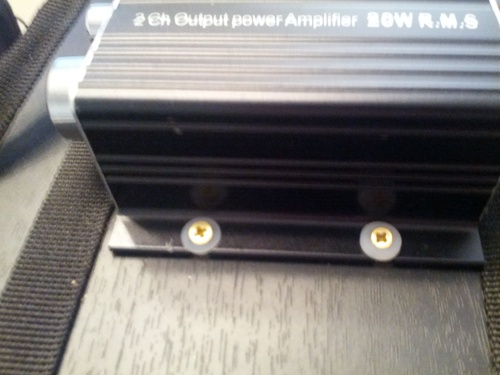
Try to keep the screws short enough that they don’t go through the side of the speaker. I wouldn’t necessarily do this with super high-end speakers, but for a set you are going to use in the backyard while you are hanging out it shouldn’t alter them in a way that matters. The washers are to reduce vibration between the speakers and the amp.
The future
While this is a great solution for now, ideally I would like to tie these speakers more directly into the main A/V system. That means either finding a wireless way to connect them to the back of my receiver or creating some sort of client that syncs playback off of the music server. Both of those would allow me to have the same song playing in all of the speakers in the house. Right now wireless bridge solutions are kind of crappy and expensive and, as I noted before, I’m not good enough to build the clients. So for now this will do.

